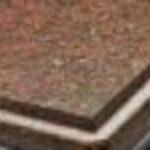I am a granite fabricator and installer and have worked in the trade for many years. I have been employed by many shops around the U.S as well as running my own business. In this time, I have learned of many tricks and cover-ups. This is a short article to inform the buyer on what to look for, and how to make sure a top quality product is being provided.
First of all, it should go without saying, get multiple quotes from various shops in your area. Make an appointment to have your cabinets measured and a price, or estimate, will be provided. You could also draw a simple diagram of your cabinets, with measurements, and this can dropped off or faxed to area shops. Then an estimate can be provided to you over the phone. National average is seventy dollars per square foot, but it is much cheaper in many regions where there is more competition.
Next, before providing a down payment , insist that you would like to inspect your countertops before they are installed. You are paying top dollar so any honest, reputable fabricator should not have a problem with this.
Also you should agree before hand on the placement of any seams in the material. Certain seams are necessary, but sometimes, the fabricator may sneak some extra seams in to save himself money on material by using left over scraps from previous jobs. This is a very common practice, so watch for it. Granite slabs are always at least nine feet wide, so there is rarely a need for any seams in the countertop less than nine feet in length.
Many customers get taken on this practice, and for the money they are spending they will not be happy.They will confront the fabricator afterwords, and will be told: “As the fabricator I have the right to place seams wherever I choose.” This being the case, it may also be in the fine print of the contract. This potential problem can completely be avoided by agreeing on seam placement before hand. After the tops have been fabricated, the time has come for you to inspect them. The following paragraphs will explain what to look out for.
Grain Direction. This applies to materials which have a “wavy” or “flowing” granite pattern. The granite pattern on all of the countertops in a general area should all flow in the same direction.This is especially important where two pieces join at the seam. They should always “flow” into each other, Otherwise, you will have a bothersome eyesore. This mistake is commonly made by saw operators who lack adequate layout experience.
Shiny Polishes. Look down the “face” or surface of the edges, you should not notice any dull spots. The polish on the edges should match the face of the granite and should be free of swirls, scratches and stains. Insist upon taking a rag soaked in thinner such as acetone, denatured alcohol, or lacquer thinner, and firmly wipe this down the edges. Fabricators who are in a hurry, or do not completely polish the edges will commonly hide this fact with wax. This is very common and many customers will be very unhappy when they have countertops with dull edges when the waxes wear off six months or a year down the road. Watch for this, waxing dull polishes is a very common practice used by fabricators to hide low quality craftsmanship.
Repaired Countertops. Finally look out for countertops which have been broken and glued back together. Often, broken peices have been repaired using epoxy, super-glue, and even steel rods to hold them together. Sometimes you will see a natural fissure that runs through the pattern of the stone. In most circumstances, you should not be able to feel a crack or fracture that runs through the material. You are paying good money, don’t accept broken stone. At times, the repairs are so good you will not feel the crack with your finger tips and the only way you will notice the repair is by looking “sideways” down the face. Then you will observe where the face has been re-polished to hide the crack. You will notice many deep swirls left by the polishing pads. Inspect very closely and you will see that the fracture has been filled in with glue and polished down. Lastly, keep in mind that certain fissures are a natural and unavoidable part of many types of stone.
In a nutshell, follow these few short protocols and you will avoid having any costly regrets and will be happy with your new stone countertops. Dont forget to make sure your counter tops have been properly “sealed. Countertops saturated with sealer will bead up and repell water. Seal your tops at least once a year.





